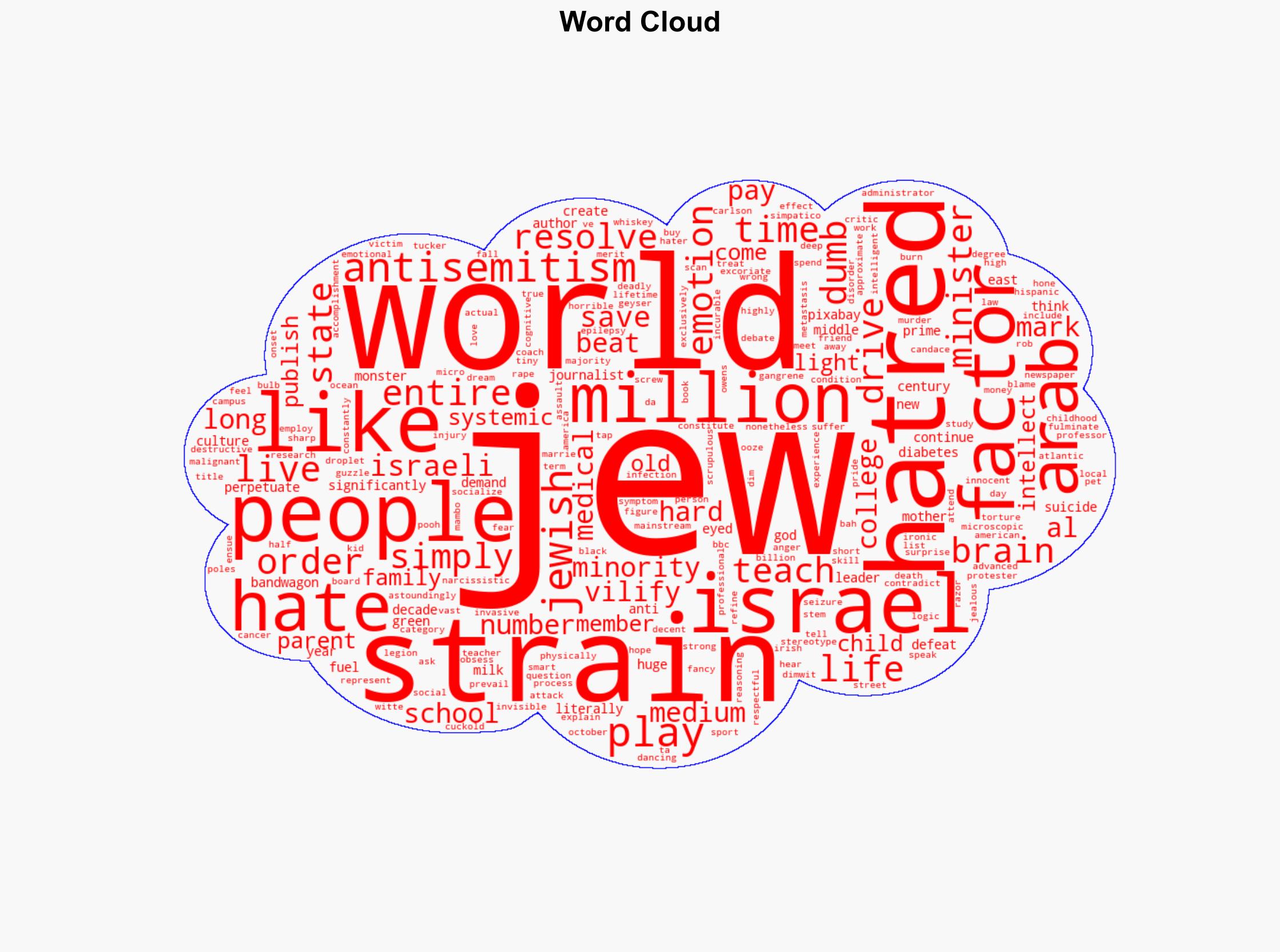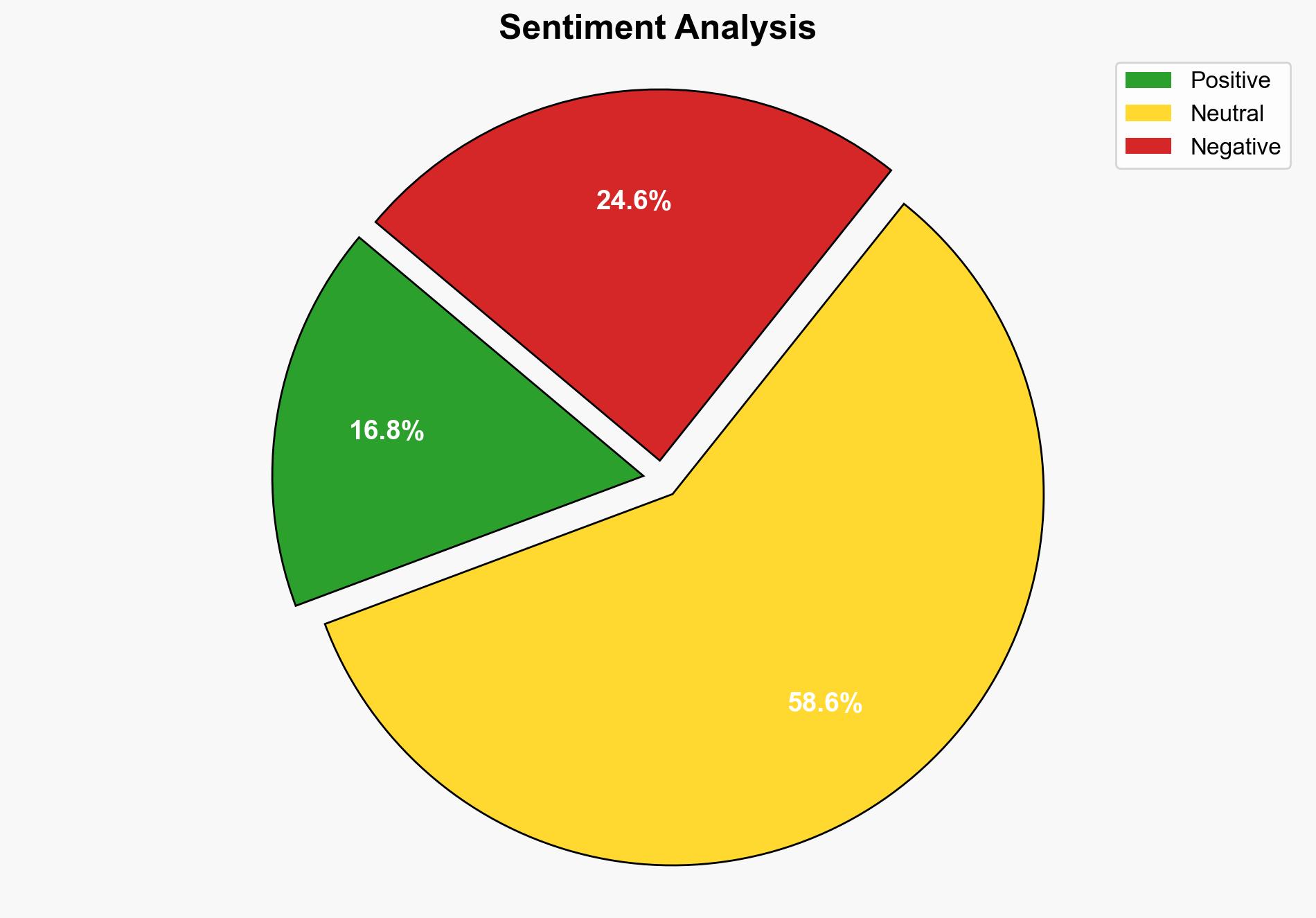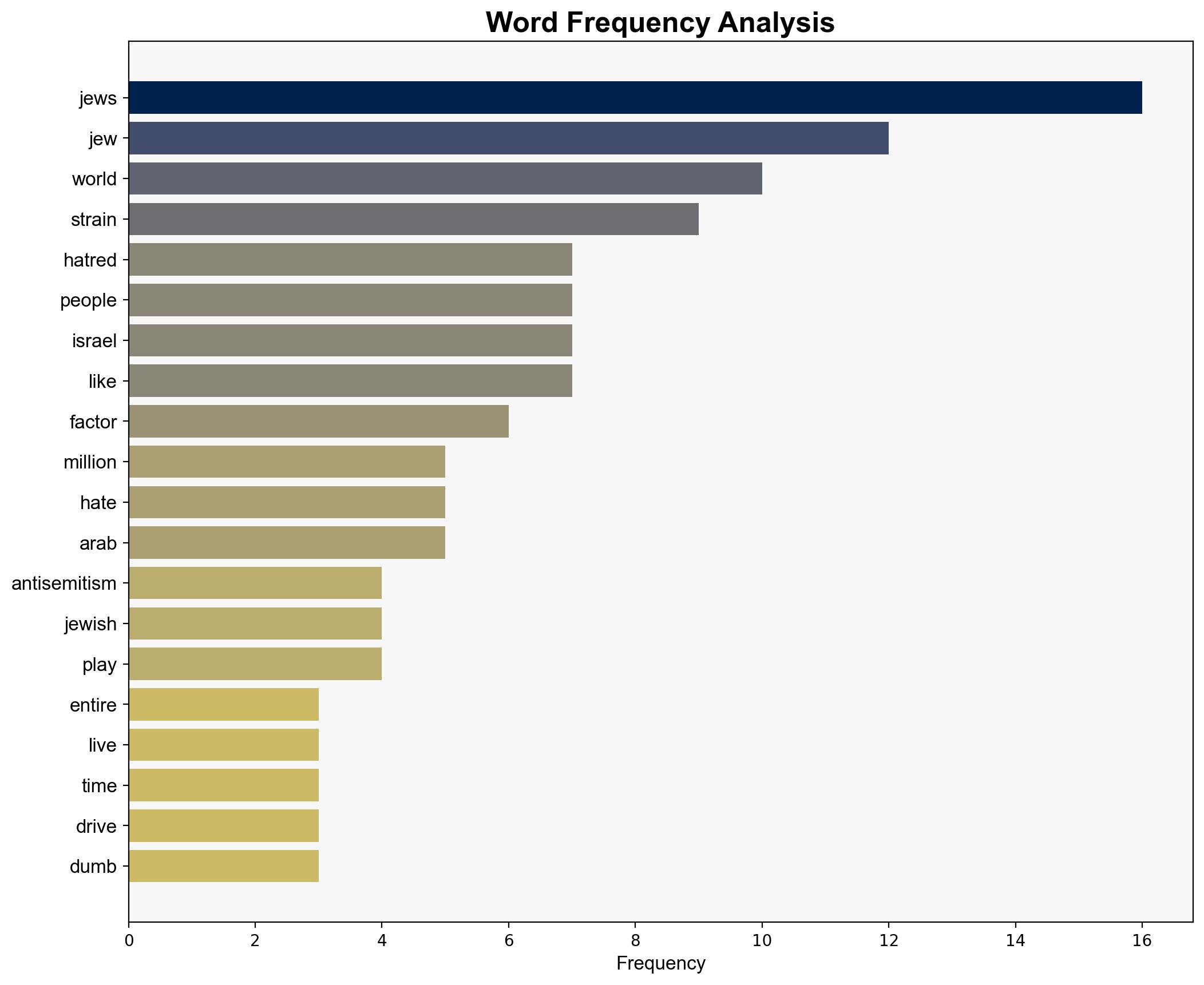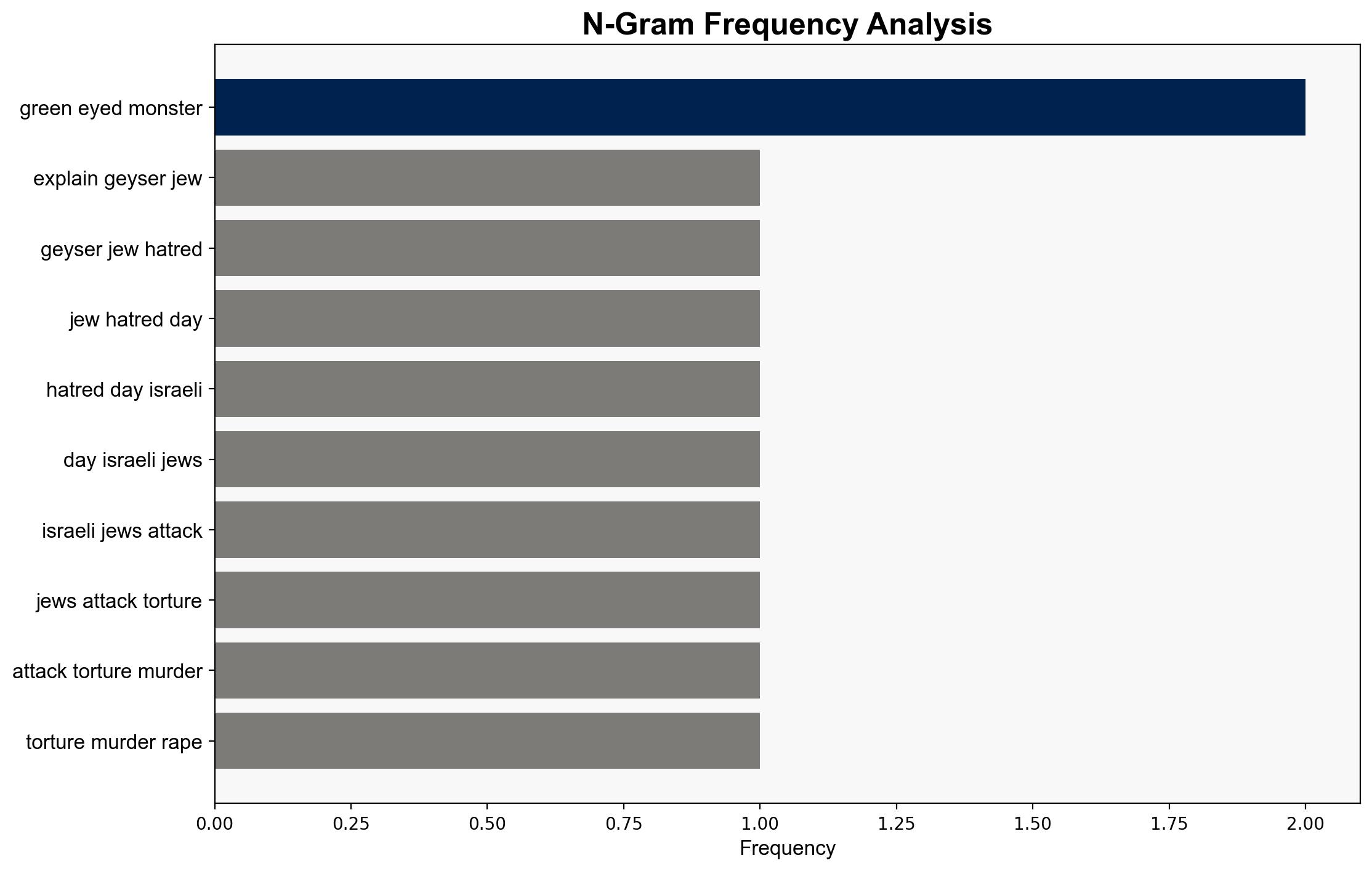Explaining the Geyser of Jew-Hatred – Americanthinker.com
Published on: 2025-08-09
Intelligence Report: Explaining the Geyser of Jew-Hatred – Americanthinker.com
1. BLUF (Bottom Line Up Front)
The analysis of the source text suggests two primary hypotheses regarding the resurgence of antisemitism. The first hypothesis posits that antisemitism is driven by deep-seated historical prejudices and socio-political narratives. The second hypothesis suggests that contemporary antisemitism is fueled by geopolitical tensions and media narratives. The first hypothesis is better supported by the evidence presented, as it aligns with historical patterns of antisemitism. Confidence level: Moderate. Recommended action includes enhancing educational initiatives to counter historical misinformation and monitoring media narratives for bias.
2. Competing Hypotheses
1. **Historical and Socio-Political Narrative Hypothesis**: Antisemitism is primarily driven by longstanding historical prejudices and socio-political narratives that have been perpetuated over time. This hypothesis suggests that antisemitism is a systemic issue ingrained in societal structures and cultural norms.
2. **Geopolitical and Media Influence Hypothesis**: Contemporary antisemitism is largely influenced by current geopolitical tensions, particularly in the Middle East, and the role of media in shaping public perceptions. This hypothesis posits that antisemitism is a reaction to current events and media portrayals rather than historical prejudices.
3. Key Assumptions and Red Flags
– **Assumptions**: The first hypothesis assumes that historical prejudices are the primary driver of antisemitism, while the second assumes that media and geopolitical events are the main influences.
– **Red Flags**: The text exhibits potential bias by generalizing the motivations behind antisemitism and lacks empirical data to support claims. There is an over-reliance on anecdotal evidence and emotionally charged language, which may skew objectivity.
– **Blind Spots**: The analysis does not account for the role of digital platforms in spreading antisemitic narratives or the impact of global migration patterns on cultural tensions.
4. Implications and Strategic Risks
– **Patterns**: The resurgence of antisemitism could lead to increased social tensions and violence, particularly in areas with significant Jewish populations.
– **Cascading Threats**: If unchecked, antisemitism could exacerbate broader racial and religious conflicts, potentially destabilizing regions.
– **Potential Escalation**: Media narratives and geopolitical tensions could further inflame antisemitic sentiments, leading to international diplomatic strains.
5. Recommendations and Outlook
- Enhance educational programs to address historical misinformation and promote cultural understanding.
- Monitor media narratives for bias and encourage balanced reporting on geopolitical issues.
- Scenario-based projections:
- Best Case: Reduction in antisemitism through effective education and media regulation.
- Worst Case: Escalation of antisemitic violence and international tensions.
- Most Likely: Continued presence of antisemitism with periodic spikes related to geopolitical events.
6. Key Individuals and Entities
– Tucker Carlson
– Candace Owens
– Noam Chomsky
– Tony Kushner
– Peter Beinert
7. Thematic Tags
national security threats, geopolitical tensions, media influence, cultural education




